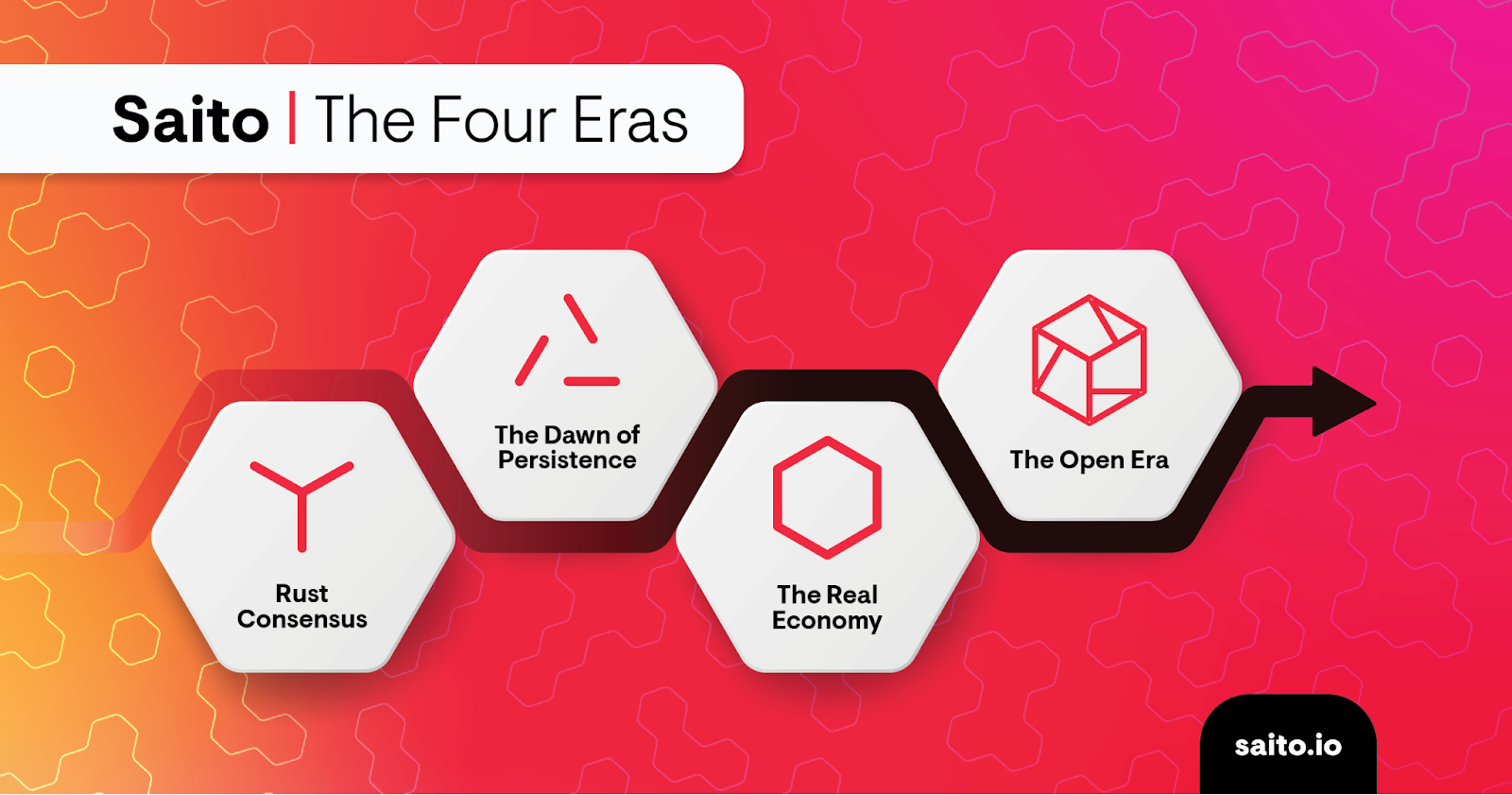| title | description | published | date | tags | editor | dateCreated |
|---|---|---|---|---|---|---|
Saito Roadmap |
Saito Development Roadmap |
true |
2024-09-27 11:23:07 UTC |
markdown |
2024-09-27 11:02:15 UTC |
The Saito Roadmap is divided into Four Eras which shift focus from development of the underlying software to distribution of usable apps and growth of an open public ecosystem.
April 2021 - December 2022 (finished)
Developed a standalone Rust-client to replace our javascript prototype which joined the network in November 2021. Applications focused on the Saito Arcade and standardized UI Components. The initial supply of ~3 billion SAITO tokens were distributed to adopters to usher in our current period of "zero inflation" and token stability.
January 2023 - December 2024 (expected)
Our Rust codebase reached enough maturity to compile into its WASM binary form. Our application suite expanded to include Saito RedSquare and a suite of Video/Chat tools. Token persistence become a reality for large on-network deposits, while the Saito Wallet expanded to include support third-party assets.
January 2024 - December 2024 (expected)
Token Persistence work continues as our Rust client expands support for all on-chain deposits. The network will also shifting to support our circular design with reliable ATR broadcasting to permit the network to persist without the need for chain-resets.
Our application team will continue to improve our core suite of applications, but shift focus to ensuring tools exist to allow third-party developers to develop and deploy applications onto the network.
Saito will have a nucleus of real organic usage by now. We will focus on expanding these use cases to incubate a real-world Saito economy. With staking well-tested and token persistence a reality, incentives for the release of additional tokens can be developed or the outstanding supply burned or released into the ATR mechanism for release over the next century.
Core development will finalize consensus variables such the burn-fee algorithm, block time and advanced features like congestion management in the light of real network conditions. Updates and software patches can simply be applied to the rotating blockchain as is routinely done in other networks.
The project will consider releasing tokens to incentivize application development through the release of an advertising faucet that will get users the tokens necessary to use network nodes and thereby incentivize node operators to roll-out public infrastructure.
Core application work will shift from specific applications toward infrastructure like transaction archives, advanced block explorers, app stores and node deployment software. We expect nodes to be run for profit by independent node operators, giving users flexibility in switching between providers.
Core development will focus on advanced features like L2 EVMs and base-layer scripting support as required by fee-generating applications. Wallets and applications are available for a variety of platforms. Nodes are predominantly run by third party and commercial entities.
Development is increasingly external and community-based. The project retains a leadership role in technical development and advancing the protocol, including the operation of core servers to provide infrastructure stability. The community takes increasing responsibiltiy for stewardship of the ecosystem and the prioritization of Saito Implementation Proposals.
Funding is made available for private-sector development should use cases appear that the community expects to further drive transaction volume and increase security. Any remaining unallocated tokens will be burned or locked-up to force further tokenomics changes to require a community-backed hard fork.
